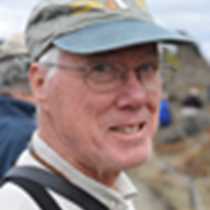The Enterprise Islands
Antarctica is pictures of endearing penguins, of sinister leopard seals, of weddell and crabeater seals sleeping peacefully on ice flows. It is massive tabular icebergs, blue ice, and majestic glaciers sweeping down from the mountains of the Peninsula. It is tales of heroic explorers struggling against the forces of wind, cold and drifting ice. Today, looking down into the clear water around the Enterprise Islands, we found a picture that tells a different tale. The “Enterprise” from which the islands take their name is whaling. In Gubernoren Harbor lies the rusting hulk of the transport ship Gubernoren. It caught fire on 27, January 1915, the night before its departure for home in Norway with a full load of whale oil. (Perhaps the crew began their celebration a bit too soon!) To save the cargo, the ship was scuttled. Around the corner is Foyn Harbor, named for the inventor of the harpoon gun. Mounted on the bow of steam-powered catcher boats, Captain Foyn’s invention made it possible to take the large and fast-swimming rorquals: blue and fin whales. Between 1909 and 1927 16,000 blue whales, 21,000 fin whales, and 5,500 humpback whales were taken around the South Shetland Islands and the Antarctic Peninsula. They were towed back to protected harbors where their blubber was rendered into oil and packed into barrels for shipment back to Norway, and from thence around the world. The carcasses were simply shoved out into the sea. Their massive bones remain in the water to remind us of the tale. Now, humpback whales are recovering around Antarctica – we had wonderful encounters with humpbacks today – but blue and fin whales numbers remain almost nil, their Antarctic populations perhaps destined for extinction. Let us not condemn the whalers for their enterprise, but let us learn from the result of their brutal efficiency.
Antarctica is pictures of endearing penguins, of sinister leopard seals, of weddell and crabeater seals sleeping peacefully on ice flows. It is massive tabular icebergs, blue ice, and majestic glaciers sweeping down from the mountains of the Peninsula. It is tales of heroic explorers struggling against the forces of wind, cold and drifting ice. Today, looking down into the clear water around the Enterprise Islands, we found a picture that tells a different tale. The “Enterprise” from which the islands take their name is whaling. In Gubernoren Harbor lies the rusting hulk of the transport ship Gubernoren. It caught fire on 27, January 1915, the night before its departure for home in Norway with a full load of whale oil. (Perhaps the crew began their celebration a bit too soon!) To save the cargo, the ship was scuttled. Around the corner is Foyn Harbor, named for the inventor of the harpoon gun. Mounted on the bow of steam-powered catcher boats, Captain Foyn’s invention made it possible to take the large and fast-swimming rorquals: blue and fin whales. Between 1909 and 1927 16,000 blue whales, 21,000 fin whales, and 5,500 humpback whales were taken around the South Shetland Islands and the Antarctic Peninsula. They were towed back to protected harbors where their blubber was rendered into oil and packed into barrels for shipment back to Norway, and from thence around the world. The carcasses were simply shoved out into the sea. Their massive bones remain in the water to remind us of the tale. Now, humpback whales are recovering around Antarctica – we had wonderful encounters with humpbacks today – but blue and fin whales numbers remain almost nil, their Antarctic populations perhaps destined for extinction. Let us not condemn the whalers for their enterprise, but let us learn from the result of their brutal efficiency.




